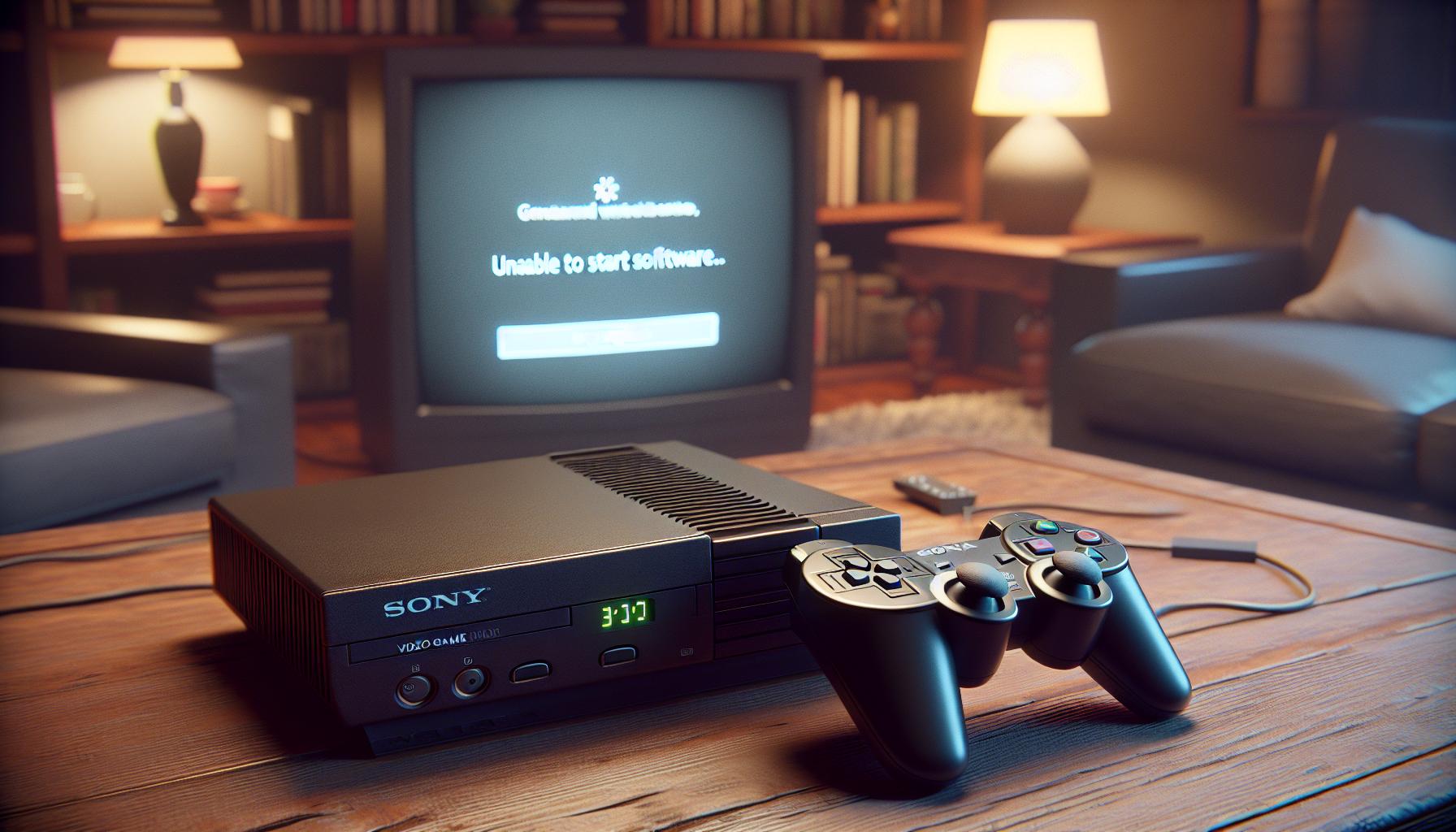If you’ve ever faced the frustrating moment of trying to start a game on your Nintendo Switch only to be met with an error message, you’re not alone. It’s a common issue that can leave even the most seasoned gamers feeling stumped. Whether it’s a glitch in the system or an issue with the software itself, knowing how to troubleshoot these problems can save you a lot of time and headaches.
Key Takeaways
- Common Issues: The “unable to start software” error on Nintendo Switch often arises from software corruption, outdated system software, or insufficient storage space.
- Troubleshooting Steps: Restarting the console, checking for system updates, and freeing up storage are essential first steps to resolve launching issues.
- Reinstallation Solution: Reinstalling the problematic software can fix issues caused by corrupted game files and ensure a clean installation.
- Regular Maintenance: Keeping software and firmware up to date, along with maintaining adequate storage space, helps prevent future errors and enhances gaming performance.
- Factory Reset as Last Resort: If all else fails, performing a factory reset can resolve deep-seated software issues, but it’s crucial to back up data beforehand.
Unable to Start Software Nintendo Switch
Encountering issues when starting software on the Nintendo Switch occurs frequently among users. Error messages or a blank screen often appear, leading to confusion and frustration. This problem affects both casual gamers and experienced players alike.
Various reasons contribute to this issue. Software corruption can result from an incomplete download or improper installation. Insufficient storage space may hinder a game’s ability to launch. Additionally, hardware problems such as a malfunctioning console or outdated system software can also lead to difficulties.
Recognizing and addressing these factors is crucial for a smoother gaming experience. Diagnosing the specific cause behind the inability to start software sets the stage for effective troubleshooting. Solutions range from simple restart procedures to performing system updates or even resetting the console.
Common Causes of “Unable to Start Software Nintendo Switch”

Multiple factors can prevent software from starting on the Nintendo Switch. Identifying these issues aids in efficient troubleshooting.
Software Corruption
Software corruption often results from incomplete downloads or interrupted installations. I find that damaged game data can also stem from power outages during downloading. Verifying the integrity of the game files through the console’s settings may help resolve this. If corruption is confirmed, reinstalling the affected software is a practical solution.
System Updates
Outdated system software may lead to compatibility issues with newly released games. I’ve noticed that updates enhance performance and fix bugs. Regularly checking for system updates through the settings menu ensures applications run smoothly and reduces error occurrences.
Storage Issues
Insufficient storage space directly impacts the ability to download, install, or run games properly. I recommend checking available storage regularly and removing any unnecessary data or applications. In cases where storage is critically low, utilizing a microSD card for additional space efficiently resolves this barrier.
Troubleshooting Steps

When facing the “Unable to Start Software” error on a Nintendo Switch, following these troubleshooting steps can effectively resolve the issue.
Restarting The Console
Restarting the console clears temporary files and can fix minor glitches. To restart, press and hold the power button for about three seconds. Select “Power Options” and then “Restart.” This simple step often resolves software issues that prevent games from launching.
Checking For Updates
Keeping the system software up to date is essential. To check for updates, navigate to “System Settings,” then select “System,” and tap on “System Update.” If an update is available, follow the prompts to install it. Regular updates ensure compatibility with new games and enhance overall performance.
Freeing Up Storage Space
Insufficient storage space can hinder software performance. I recommend checking available storage by going to “System Settings,” then “Data Management.” Delete unused applications or move data to a microSD card to free up space. Keeping at least 10-15% of storage available helps maintain optimal performance for game downloads and installations.
Alternative Solutions

Exploring alternative solutions can help resolve the Unable to Start Software Nintendo Switch. Below are two effective methods to consider.
Reinstalling The Software
Reinstalling the affected software often resolves issues related to corrupted game files. Follow these steps to reinstall a game:
- Navigate to the Home Menu.
- Select the game icon.
- Press the “+” button on the controller.
- Choose “Manage Software” and then “Delete Software.”
- Access the Nintendo eShop, find the game, and download it again.
Confirming a stable internet connection before redownloading the game ensures a complete installation. Regularly backing up game save data to the cloud minimizes the risk of losing progress during this process.
Factory Reset
Performing a factory reset can also eliminate persistent issues resulting from complex software glitches. Before proceeding, back up essential data to prevent loss. Follow these steps to initiate a factory reset:
- Go to “System Settings” from the Home Menu.
- Scroll down and select “System.”
- Choose “Formatting Options.”
- Select “Initialize Console” and confirm your choice.
A factory reset restores the console to its original settings. Reinstalling all games and applications will be necessary. This method should primarily serve as a last resort when other troubleshooting steps prove ineffective.
The Good Strategies
Dealing with the Unable to Start Software Nintendo Switch can be incredibly frustrating. However I’ve learned that most issues can be resolved with a bit of troubleshooting. By understanding the common causes like software corruption or insufficient storage I can tackle these problems head-on.
Regularly checking for system updates and keeping my storage in check has made a noticeable difference. If all else fails I know that reinstalling the software or even a factory reset can help restore my gaming experience. With these strategies in mind I’m ready to enjoy my Nintendo Switch without the hassle of error messages.



